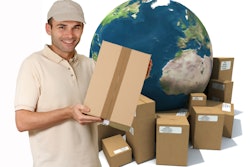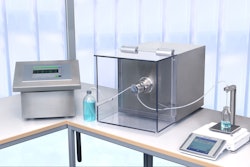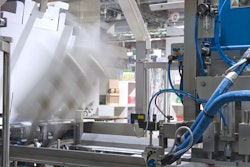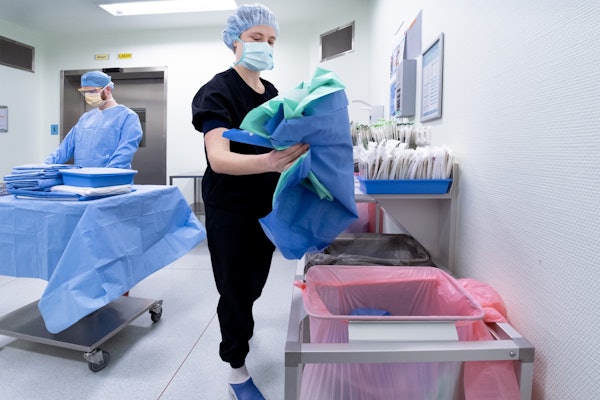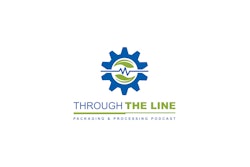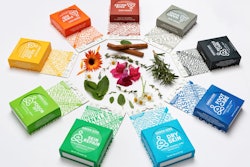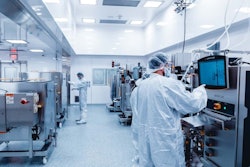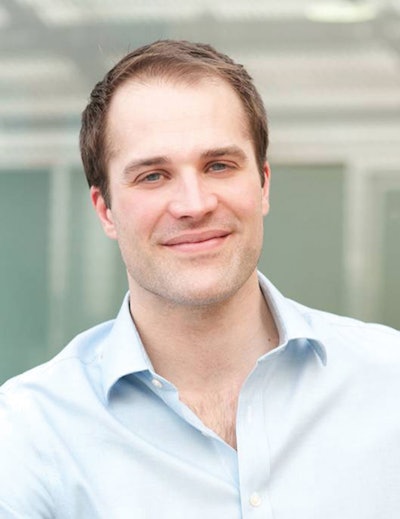
Multinational consumer goods company Reckitt Benckiser plc has made significant strides in its sustainability goals in the last several years. While the name of this global company may not be very familiar to U.S. consumers, the Slough, U.K.-based company produces a host of best-selling household, health, and personal care products sold here and in more than 200 countries around the world.
Among its 19 “Powerbrands”—those high-growth brands that make up 70% of its net income—are such well-known names as Air Wick, Calgon, Clearasil, Durex, Lysol, Mucinex, and French’s. According to the company, it sells 7.3 billion consumer units each year.
As with all CPG companies today, RB has faced mounting challenges of late brought on by a changing world, including rising energy costs, pressure on natural resources, increasing water scarcity, and the growth of emerging markets, among others. To address these issues, RB has undertaken several sustainability strategies, including its Carbon20 project, begun in 2007, and its more recent, refreshed strategy, betterbusiness.
In this exclusive Q&A, Packaging World speaks with RB’s Dave Challis, director - Global Sustainability, Environment, Health and Safety, about the success of Carbon20, the goals of betterbusiness, and the impact of RB’s strategies on the company, its consumers, and the environment.
Packaging World:
In 2007, RB created a goal around reducing its GHG emissions through the Carbon20 program. How has its sustainability strategy evolved since then, and what forces are driving greater sustainability within the company?
Dave Challis:
We launched our new approach to sustainability, called betterbusiness, in September of last year. It’s designed to support our business vision of a world where people are healthier and live better, and our purpose, which is to make a difference by giving people innovative solutions for healthier lives and happier homes.
When we were developing the new strategy, we looked at the megatrends affecting the world and focused on those where we could make a meaningful difference. We set new, ambitious sustainability targets and have expanded our focus beyond carbon to water impact. Carbon20 was a great success, but we learned that we also needed to frame sustainability in the language of business. And that’s why, in addition to our big 2020 carbon and water goals, we also set a 2020 goal for one-third of our net revenue to be from products that are significantly more sustainable, as measured by our Sustainable Innovation Calculator. This new approach has already helped us to embed sustainability even further into the day-to-day running of the business.
What is the Sustainable Innovation Calculator?
The Sustainable Innovation Calculator is a simple tool we use to help us assess whether a change to a product will improve its sustainability profile. It is a streamlined Life Cycle Assessment tool that models the most significant environmental impacts of our products, including raw and packaging materials and consumer use, and allows our product developers to quickly understand the environmental impact of their innovation. We use it at key decision points to ensure we are making more sustainable choices affecting the carbon footprint, water impact, packaging, and ingredients.
RB claims that through Carbon20, it has reduced greenhouse gas emissions (GHGs) by 21% “per dose.” What constitutes a “dose”?
A dose is defined as the measure of each individual RB product required to deliver that product’s intended service. For example, one load of dishes cleaned with a Finish dishwashing tablet or one instance of reassurance provided by Durex. In some cases, a dose is defined using a set period of time—for example, the recommended number of Nurofen tablets or Strepsils lozenges for 24 hours of relief. Using a dose also aligns with our life-cycle approach because in LCA terminology, a dose is the “functional unit” of consumer use.
The betterbusiness strategy is built around three challenges. Can you describe these challenges and why RB has focused on these areas?
betterbusiness focuses on the areas where we can make the biggest difference: the need for better health and hygiene behavior, and the increasing scarcity of water. We will address both of these issues by delivering more sustainable innovations in a world where water, energy, and other resources are increasingly constrained. We’ve set three big sustainability goals for 2020:
• 1/3 of our net revenue from more sustainable products
• 1/3 reduction in our water impact (vs. 2012)
• 1/3 further reduction in our carbon footprint (vs. 2012)
We’ve also extended our global partnership with Save the Children, with a new vision to target the devastating global death rate in children under five from diarrhea by 2020. These goals are supported by specific targets and functional programs, which are detailed in our new sustainability report (see www.rb.com/sustainability-report2012).
Where does packaging fit into these three goals?
Packaging is an integral part of all three big sustainability goals; better packaging can have a lower carbon footprint and a lower water impact, and it can be the reason for a more sustainable innovation. We know that packaging is very important to our consumers, and so it’s one of our key focus areas.
At a product level, all of our product innovations are assessed using our new Sustainable Innovation Calculator. As part of this tool, we encourage less packaging per dose of product, an increase in post-consumer recycled content, and the use of more sustainable materials.
We’ve also refreshed our company polices and have developed a new policy and standard for the responsible sourcing of our natural raw materials that covers board-based packaging and outlines our minimum standards and expectations (see www.rb.com/Our-Responsibility/Policies-and-reports). Our packaging suppliers also are part of our social compliance program (RB’s Global Manufacturing Standard), and we have developed a new guide for suppliers (see www.rb.com/documentdownload.axd?documentresourceid=37780).
If you look in general at the life cycle of RB’s products, is there one area where you find the greatest environmental impact? How do you intend to bring about change in this area?
Our life-cycle approach has highlighted two areas where our products have the most environmental impact in terms of both carbon footprint and water impact: 1) raw and packaging materials, and 2) consumer use. Raw and packaging materials are under our direct control and therefore a focus area for improvements. The impacts arising from consumer use of our products dominate the life cycle and are under our indirect control and therefore harder to influence.
We are tackling our consumer use impacts on two key fronts—better design, and consumer education and engagement. We are actively designing more sustainable products like Lysol Touch of Foam foaming hand soap, which has been shown to use 15% less water in use than traditional hand soaps. One way we are engaging consumers is via our new Web site (see www.happier-homes.com/), which provides consumers with additional advice and information on how to use our products in a more sustainable way.
On average, how much of an RB product’s footprint can be attributed to its packaging?
We have a very diverse product portfolio, so product impacts vary from product to product. When you look at the whole company, about 15% of our carbon footprint and 11% of our water impact is from packaging. To put it into perspective, about l% of our impact comes from our own factories. Of course, we will continue to reduce our factory environmental impacts, but this highlights the importance of packaging in achieving our goals.
What is the process for making changes to a package, or designing a new package, to ensure the greatest sustainability?
We have a three-pronged approach to making our packaging more sustainable:
1. Reduce packaging weight
2. Consider more sustainable materials
3. Increase recyclability
We use our Sustainable Innovation Calculator to assess packaging changes during product development. We’ve designed the packaging part of the calculator to promote using more post-consumer recycled packaging. Packaging reductions have played—and will continue to play—a key role in achieving our carbon reduction targets. Many of our brands have undergone concentration or compaction, and weight reduction has touched all of our brands. At RB we look at the sustainability impacts per dose of product throughout the life cycle, and we will continue working with our packaging suppliers with this in mind so we reduce the total carbon footprint of products per dose—rather than just per pack.
Are there any packaging materials that are preferred over others as a policy at RB? Are there any materials that RB has eliminated?
At the end of 2009, RB eliminated the use of polyvinyl chloride in our home and hygiene products as part of our Global Ingredient Guidelines (GIG). GIG combines regulatory and safety requirements for generic ingredient groupings plus specific directions on use (or the prohibition of use) of specific ingredients. This enables all employees to play a role in ensuring we meet our product stewardship aspirations.
Where do you see the greatest gains in packaging sustainability moving forward?
With our Carbon20 program, we learned that lots of small improvements have the biggest impact overall. So we will continue to focus on making packaging more efficient wherever we can. As PCR materials become more widely available, we will continue to incorporate these where it makes sense for our brands. And we’re looking into natural raw materials that could help replace synthetic packaging. In addition to these, there are potentially big gains from developing completely new types of packaging, and we are open to new ideas via our open innovation platform, Idea-Link (see www.rb.biz).
Can you provide an example of a package that was redesigned for greater sustainability, or a new package designed to be environmentally friendly?
Recently we redesigned the cap for Frank’s Red Hot sauce. We wanted to improve the consumer experience by designing a cap that enabled consistent flow—regardless of the fullness of the bottle—and that also reduced splatter. So as we explored options, we also considered how we could improve the environmental impact of the packaging. We reduced the weight of each cap by 1 g, which resulted in over 22,000 lb of plastic avoided, equivalent to over 162,000 kg of GHGs avoided each year.
Is RB looking at any alternative packaging materials for its products?
Yes, our R&D teams continually evaluate new and alternative materials, including packaging. Our approach is to look at the entire product life cycle and understand how the consumer uses our products to identify win-win packaging solutions that are more sustainable and provide other benefits to the consumer.
If RB achieves the goals it has set forth in its betterbusiness strategy, what will be the net result for the company?
There are many benefits from achieving our sustainability goals. We will sell more sustainable products; our goal is for one-third of our net revenue to come from more sustainable products by 2020. We will also reduce our overall impact; our long-term goal is to decouple the growth of the business from our environmental impact. We’ve made a great start to this, but we know we can do more by uncovering opportunities to be more efficient, which is good commercially as well as environmentally.
We also know that many of our stakeholders are interested in how RB is managing the risks and opportunities from sustainability issues, and continuing to deliver against our goals is great for employee attraction and retention as well as demonstrating to consumers that we’re a responsible company. Finally, we know that sustainability is an important area for our retail partners, so we can continue to build our relationships with them on sustainability.
Are there any companies, organizations, or individuals that have inspired you personally in your sustainability journey?
I think BMW’s approach to sustainability is great. First, because they have integrated sustainability into their current lineup through Efficient Dynamics. Second, because they are also taking the long-term view with their sustainable individual mobility program. But mainly because they seem to have the approach that sustainability can make for a better car—not just a more efficient or environmentally friendly one. I believe we can improve the sustainability of products and services without compromising their performance. Take Lysol Power & Free as an example: Not only is it a more sustainable product that leaves no harsh chemical residue, it also works brilliantly and we’ve had great feedback from people using the product. Win-win!



